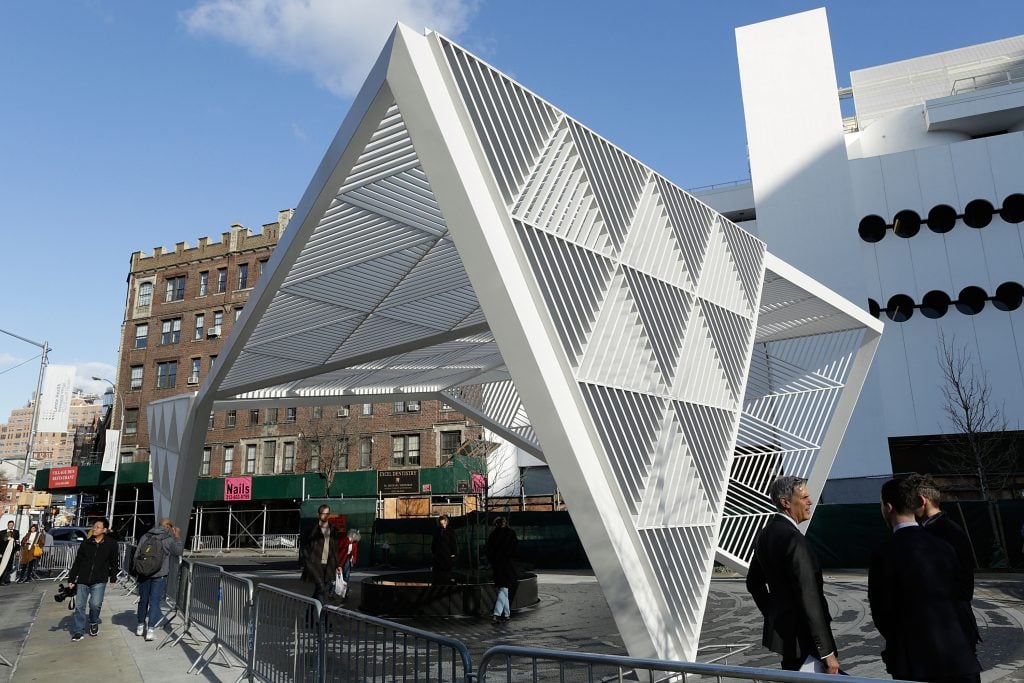Art World
An Audio History of the AIDS Epidemic Will Play All Month Long in New York to Mark the 40-Year History of the Crisis
David Wojnarowicz and Larry Kramer are among those whose voices can be heard.

David Wojnarowicz and Larry Kramer are among those whose voices can be heard.

Brian Boucher

Voices from the 40-year history of the AIDS crisis will be heard every day this month at the New York City AIDS Memorial in Greenwich Village.
From activist Larry Kramer’s famous 1991 “plague” speech to artist David Wojnarowicz’s audio recordings during ACT-UP demonstrations, the 45-minute recording, titled “Hear Me: Voices of the Epidemic,” will sound every day at 7 p.m., accompanied by a lighting installation.
It launches December 1, in recognition of World AIDS Day.
The project has been over a year in the works, and was partly conceived in response to the angular, abstract structure itself, said the memorial’s executive director, Dave Harper, in a phone interview.
“I thought, ‘How can we use voices to make the memorial feel alive, inhabited by those past and present?’” he said. “It’s such a beautiful, iconic structure, but the hard edges sometimes push against the humanity it embodies. How can we make the memorial more human and more alive?”
While much of the material included is familiar, some of it took on new power in a different context.
“One of my all-time favorite speeches is Vito Russo’s ‘Why We Fight.’ I’ve listened to it a thousand times and I’ve read it a thousand times but in this context it’s very powerful, and the same for Larry Kramer’s ‘plague’ speech,” he said. “When we got to hear it on site, during the trial runs, it was chilling. Some of the things they’re saying in 1985 and 1990 are the same today.”
Harper invited New York artist and writer Theodore Kerr to work as creative consultant on the project. Kerr remembers Harper’s phone call inviting him to participate, he told Artnet News, because he was at the Spring Break art fair. “And I wasn’t wearing a jacket, or a mask!”
Alongside archival recordings, there are new clips from younger voices, including a poem by the 30-year-old artist Kia LaBeija. Those juxtapositions, Kerr said, are especially moving.
“We hear new poems from younger people referencing what it is to be young and live with HIV and then also to wrestle with that history,” he said. “And then we hear Russo say, ‘One day this will be over.’”
Today, one of the sad echoes of the early days of the AIDS crisis, before it was known how the disease was transmitted, is the fear of physical closeness. But visitors will be able to preserve distancing protocols while visiting the outdoor memorial—and in any event, Kerr isn’t giving in to anxiety.
“I’m HIV-negative but I’ve been in the world of HIV for 20 years, and it has taught me how to live my life and prepared me for this moment,” Kerr said. “To be able to sit outside and spend 45 minutes with some of the most powerful voices available to us is a real gift. You will have a different relationship to the situation we’re in. You will find solace in the fight that started in the ’80s and continues to this day.”
The public presentation is complemented by “A Time To Listen,” an online series of six recorded conversations in which Harper and Kerr speak with artists, activists, writers, and educators.